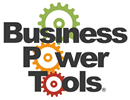Good public relations management practices: Including Photographs
Photographs increase the likelihood that a publication will write about your product. Many publications need artwork to liven up their pages. It’s not unusual for one product to be included in a news brief column while a similar product is displayed with a picture in the main news section. The only difference is that a picture was available for one and not the other.
Publications print several types of pictures, including product shots, computer screen shots, and product box shots. If appropriate, you can also use photos that illustrate customer applications of your product or their results from using it, or photos of personnel who have been quoted in the press release. Work with a photographer experienced in producing each type of photo, preferably one who’s also experienced in shooting your type of product.
Editors tend to prefer photos in two formats: black-and-white prints and color transparencies. Often, a photo is separated from the press kit when an editor passes the photo along to the art department. Always provide a “cutline” (see the Nanao USA example) that identifies the product or person, and explains what is happening in the picture (if applicable). (If necessary, attach a sheet of paper that contains this information to your photo.) Provide this information in two sentences, and include the company name, phone number and contact person. By identifying the photo this way, it’s not as likely to be lost or thrown away because no one knew what it was or where it came from.
Keep adequate supplies of each product photo on hand so you can send them to reporters at a moment’s notice. Because of the speed at which daily and weekly newspapers must be produced, art directors usually need pictures “yesterday.” If your product has wide appeal, maintain a large quantity of copies of the photos. If the product has limited application, you’ll only need a handful of photos.
Local newspapers are the most likely to want photos of company executives. Don’t waste resources by distributing hundreds of photos. Keep a few copies in your files for special occasions.
Ideally, you’ll include at least one photo with every press kit. Because photos are expensive (about $1 each in quantity for black-and-white), your budget may not allow you to do this. Many publications will call you if they want a picture and you can send it by overnight courier to meet their deadlines, so it’s alright if you can’t afford to include a photo in each press kit. However, some publications simply print photos received and don’t call to ask for pictures, so you do run the risk of missing opportunities.
Charts, Graphs & Line Art
Charts, graphs and line art can help tell your story to the media. When presenting material involving heavy use of numbers, such as the results of a survey, consider adding a chart or graph that tells your story clearly and vividly at a glance. Provide camera-ready art that editors can print in their publications.
